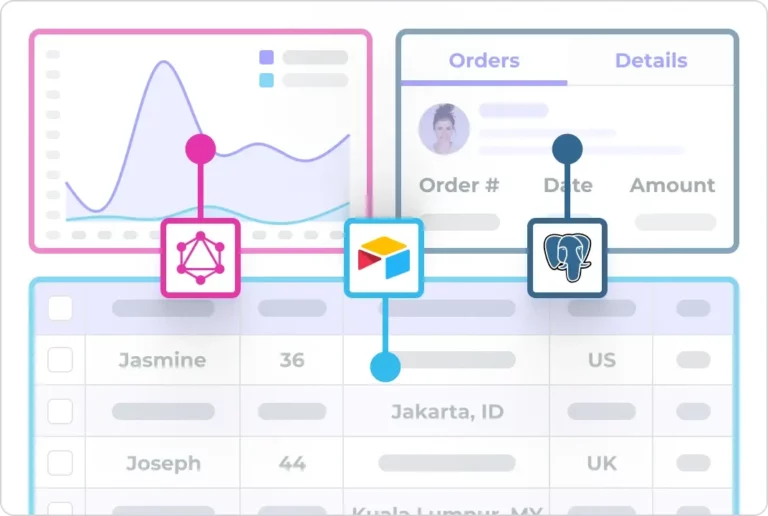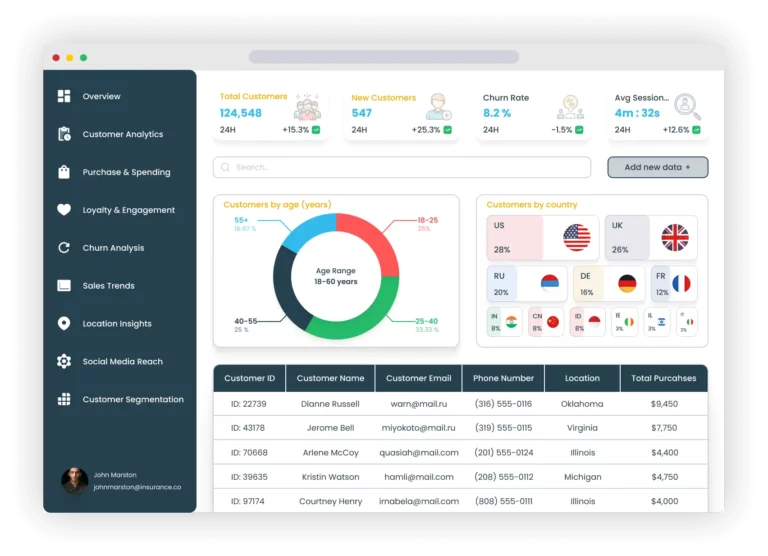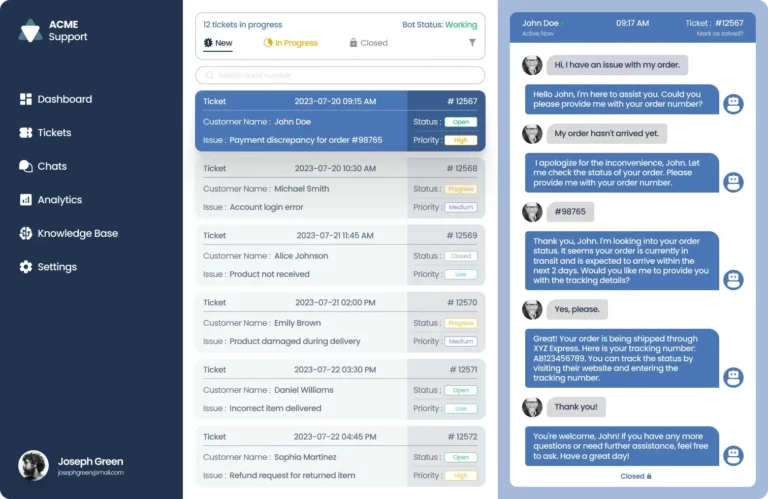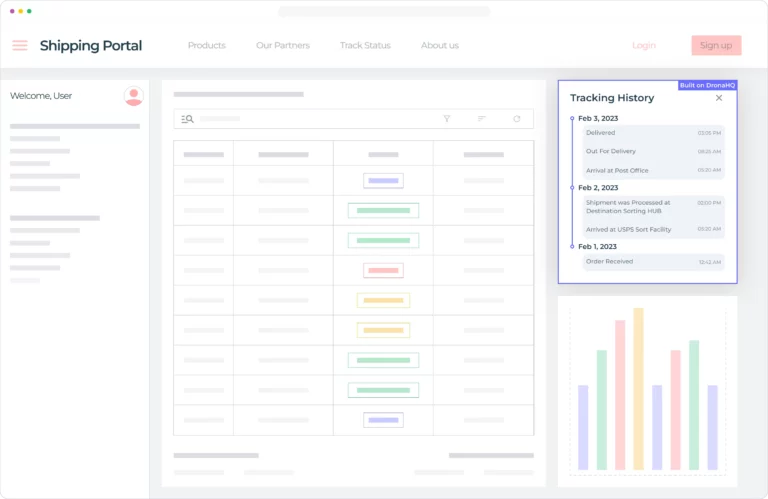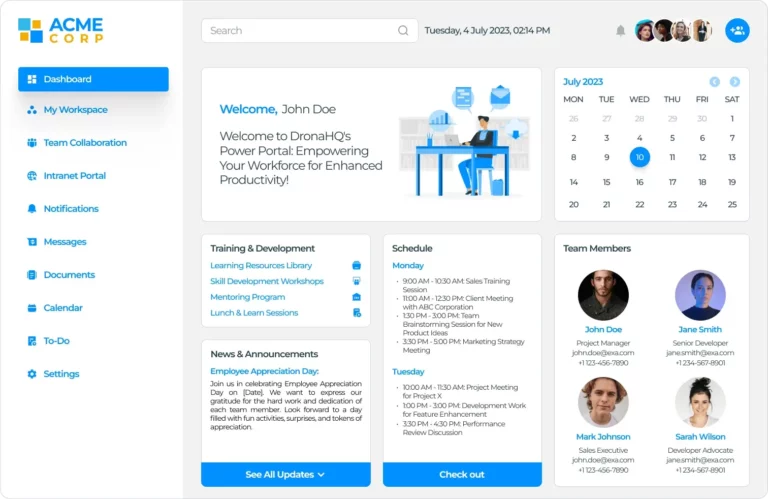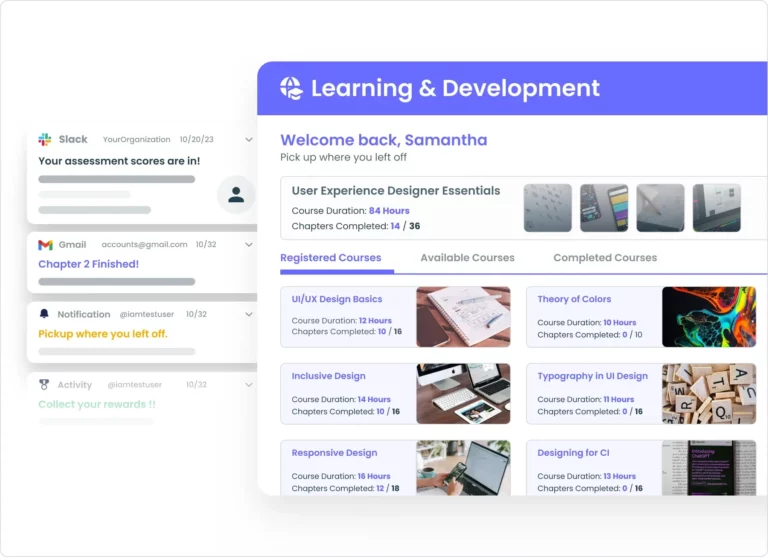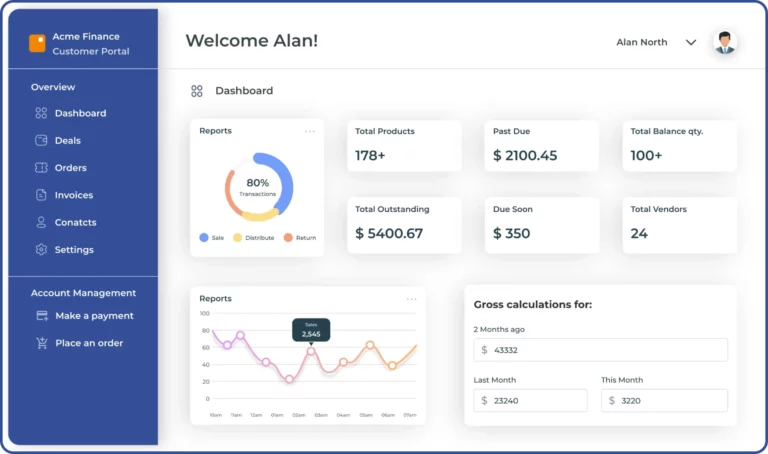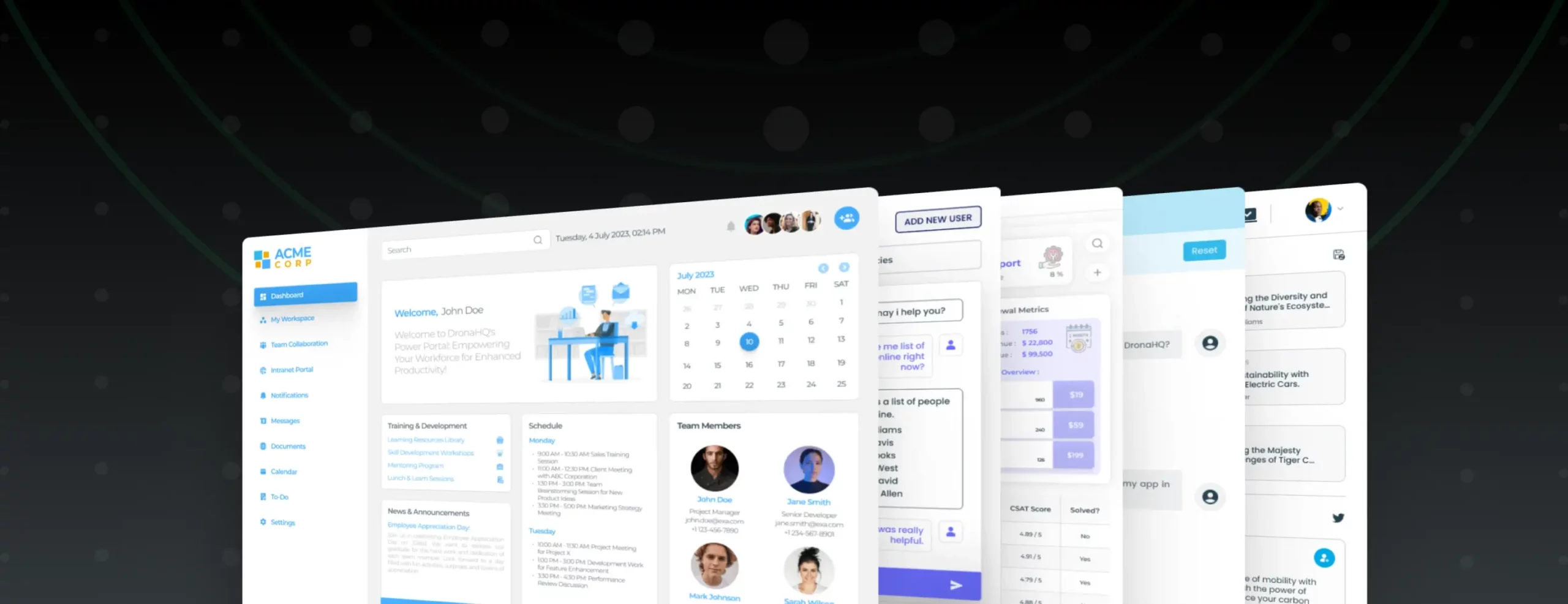

Latest low-code app examples
The low-code market, valued at $7.61 billion in 2021, is projected to soar to $36.43 billion by 2027. Currently, 80% of global business IT teams have embraced low-code tools to alleviate pressure on their IT and engineering resources. Low-code platforms streamline application development, enhancing delivery and easing the load on engineering teams.
In this article, we explore various low-code examples, from mobile forms capturing sales order data to web apps facilitating data administration.
Resources to learn more about: 1. What is low-code, 2. How to choose a low-code platform, and 3. How to build your first application using low-code.
Low code examples
Low-code technology is industry agnostic. Businesses of all sizes are implementing low-code technology to build digital solutions that solve modern-day business problems. Before we delve into the latest examples of low-code technology, let’s look at some of the broader low-code examples where development teams can benefit from incorporating low-code technology into their tech stack.
1. User interface: A big challenge with user interface designing is the time and resources it takes to set up even the simplest CRUD interface on top of a database. This problem can be solved by the predefined UI components and drag-and-drop designing interfaces provided with low code tools. It makes it easy to implement functionalities like CRUD within minutes!
2. Internal tools: Engineering teams are found to spend more than 30% of their time building and maintaining internal tools. And these internal apps are being created to support several teams. Read more about internal tools here.
Examples of internal tools
- Dashboard / Database GUI: Dashboards and database GUIs have become a common internal tool use case for many companies to help connect disparate data sources and display data as per their needs to further interact with and make decisions.
- Admin Panel: Admin panels are useful to perform tasks like – data manipulation, activity monitoring, and approval of tasks. These typically support role based CRUD operations but most users build these from scratch to add functionalities that are not present off the shelf.
- Customer Support Tool: A customer support tool is a must-have for every business. Creating a single view of the customer by connecting data from Salesforce, Postgres, Zendesk and more. Enable your Customer Success or Sales team with the data they need to operate in real-time.
3. Cross-platform application integration and automation: Some low code tools have configurations that allow cross-platform application integration such as integration with CRM systems like Salesforce or HubSpot, and databases like MS SQL, and MongoDB that are gruelling to integrate manually. Trigger Workflows by issuing API calls or scheduling jobs every minute, hour, day, or week.
API generation: Manually generating an API is a lot of work, especially for legacy applications that weren’t designed to handle it. Low-code API generators can automatically create APIs based on existing application code. Popular low code tools which can generate API include Postman, Apicurio, Restpoint, Xano.
Fun fact: To generate a mock API from your data, and easily test, use: the API generator form DronaHQ
4. Business process management: Many BPM systems offer built-in, low code tools for building processes. While these features can sometimes be helpful for citizen developers who need a simple application, they can also save professional developers time when building more complex applications that integrate with BPM systems.
5. Containerization: Low code tools are now integrating with deployment environments like Kubernetes, to allow applications to run inside containers. This allows businesses to quickly deploy the application, from bare-metal servers to VPS, on-prem cloud, or public cloud platforms.
Business problems solved by low-code
- The global shortage of full-time developers will increase from 1.4 million in 2021 to 4.0 million in 2025. (source)
- Legacy systems no longer support the evolved business processes or deliver the desired user experience and contribute to an increase in maintenance costs.
- Businesses need to scale themselves from offline to online to reach the masses.
- It is constantly becoming hard to keep track of operations from both the business side as well as consumer side
- For businesses that have small teams and resources, it becomes hard to compete within the market
- With emerging technologies like AI and IoT, you must constantly evolve product offerings that feature these capabilities to keep up with your competitors.
How low-code app development platforms solve modern-day business problems:
- Low-code development helps optimize the entire development process to speed up delivery. It is easier to bridge the gap between legacy and modernized applications. They can help application performance and even drive innovation.
- Businesses can build applications like the web-based customer portal and B2C mobile app for their customers to scale from offline to online. This can be built on low-code platforms easily and can be hosted on your own server or the server provided by vendors like AWS, Azure etc.
- Low-code platforms provide third-party integrations which can help in fetching data from any source and displaying it on the app.
- Low-code enables you to integrate with anything. So, creating solutions such as AI-powered apps or IoT data apps becomes easier. Check how you can build an AI-enabled app in 3 simple steps >
Low code industry examples
Low code can benefit various industries, as it
- bridges operational silos,
- enables rapid application development,
- respond to dynamic business needs with speed and agility
- unlock organizational efficiency and innovation.
- reducing the work to build powerful and high-functioning enterprise applications, hosting and scaling it.
This brings us to our compilation of the top ways enterprises across industries can leverage a low code platform:
Consumer-packed goods, Retail: Retailers must create custom applications to support their growing organisation and digital needs. And these applications need to support the ever-evolving needs of the business, hence they need to be easy to maintain for both online and brick-and-mortar environments. Outsourcing or hiring a large team of developers to build all these apps using traditional methods is not an option available to many retailers as they struggle to adapt and survive in the digital world. Low code tools can help retailers build the software they need at a lower cost.
Low-Code Use Cases in CPG and Retail
- Sales Enablement App: One of the biggest challenges today’s sales team faces is dealing with a huge amount of data. Sales enablement apps give a big-picture view of key performance metrics such as pipeline progression, revenue progress, pipeline closure ratio, latest industry news, contact productivity, and more. Pulling data seamlessly from Salesforce, SAP integration and Shopfloor innovation.
- Retail Execution App: Retail execution software helps plan, manage, and monitor in-store activities in the consumer packaged goods (CPG) industry. These solutions facilitate improved collaboration between CPG companies and retailers to optimize in-store sales and increase profits.
- Counterfeit product reporting: Since whipping up tools for emergent operational activities is so easily achievable, brands can create intuitive form-based apps that the sales team on the field can use to report back any counterfeit products spotted in the stores.
Low code examples from the E-commerce industry:
- Invoice Manager App: Invoices are an effective way to communicate with clients about payments and keep records of your e-shop’s income. By generating clear, well-marked files on how much your customers owe, you can protect your business while improving your organization and records.
- Customer insights dashboard: For businesses to grow, it is highly important to capture every possible information of customers. The customer insights dashboard allows customers’ information to be easily looked up and updated
- Customer Support App: Teams use low-code to pull customer information from disparate data sources – think payment details from Stripe, customer contact details from Database, and support ticket details from Zendesk to get the complete customer picture in one single screen to resolve queries faster.
- Embed new features in portals: Businesses use low-code to extend the existing capabilities on their customer portals or websites with embeddable apps and widgets. For example, a custom form to take user input such as their concerns to make better product recommendations, or an AI-powered chatbot to quickly respond to user queries based on FAQs.
Low-code examples and use-cases from HR & L&D:
- Employee self-service portals: An employee self-service portal is a secure platform that allows employees to access relevant, structured corporate data, collaborate and request HR, IT, or facility-related services. It helps companies work efficiently and save valuable working time. It also increases data accuracy by allowing workers to take some administrative matters into their own hands.
- Payroll attendance management: A payroll management system is a software that is used to manage all your employee’s financial records in a simple and automated fashion. It provides accurate time tracking, helps to minimize the costly and inevitable errors in the manual data entry processes.
- Talent acquisition: Low-code development platforms enable HR and recruiting staff to become “citizen developers” and replace cumbersome spreadsheets with more efficient workflows, build their own careers sites, create talent analytics dashboards, develop checklists and reduce manual tasks.
- Sequential Learning Solutions: For Learning and Development (L&D) and HR professionals, low-code platforms facilitate the rapid creation of virtual learning and assessment modules. This enables a smooth transition from traditional delivery methods to concise, systematic, and engaging learning experiences, providing a powerful tool for adapting to changing educational needs.
Low code examples in the banking, finance, and insurance industry:
Low-code components are commonly used to aggregate data from different sources. This is great for financial services, as combining financial databases from multiple accounts and third-party sources could help create a more accurate picture of holdings, which is beneficial for both end users and investment firms. Banks are turning into software companies, and the Banking-as-a-Service trend is evidence of this transformation – banks are starting to expose underlying infrastructure through API-based components. Offering the ability to consume these ready-to-use components with low-code content could improve third-party adoption.
- KYC user explorer: ‘Know your customer’ or KYC guideline is important for all financial services companies to follow. Giving your team access to an internal tool for processing KYC compliance is a faster way to ensure customers are actually who they claim to be and keep your business KYC compliant.
- Fund management tool: Asset management companies that operate in venture capital funds and private equity have to be diligent with portfolios. With Low-code platforms, asset management companies can build a centralized app to access relevant reports like balance sheets, income statements, open positions, and realized gains/losses.
- Automated policy underwriting: An automatic policy underwriting rule engine built through a low-code platform can help ensure zero underwriting errors. It can further automate the end-to-end policy issuance process, deliver a superior user experience, and ensure a shorter prospect of the customer lifecycle.
- Seamless claims processing: Low-code platform enables automation of end-to-end claims journey from first notice of loss to final claims settlement. Insurance companies can use low-code to deploy solutions like auto-retrieval of policy information, claims duplicity prevention, intelligent case routing, and allocation.
- State-of-the-art customer portal: The low-code platform can be leveraged to build a state-of-the-art customer self-service portal, accessible through mobile and web. Such a portal facilitates the real-time registration of customer claims and tracks the status of submitted claims.
Low code examples for sales and marketing:
Because low-code tools have significantly less learning time than traditional development tools, marketing and other non-technical teams can acquire, learn, and adapt these tools to meet their needs.
- Event management tool: A truly comprehensive event management system will allow users and organizers to access and manage all aspects of an event, including registration, marketing, engagement, integrations, physical planning and preparation, reporting and analytics, and more.
- Sales development dashboard: For sales teams, CRMs are like lifeblood, they capture a lot of crucial information about customers but they aren’t designed in a way to streamline a sales development team’s workflow. With Low-code platforms, you can build a sales development dashboard that makes it easy for sales teams to take actions like updating info, extending trials, and enriching lead information.
- AI Copywriter: Ease of integration offered by low-code tools have made it easy for marketers to leverage generative AI capabilities in their day to day operations. A new wave of AI-enabled marketing operational apps are taking shape. From ad copy generators to email copy generators.
Low code examples from the IT, and SaaS industry:
Low-code makes it easier for the team to integrate OT (Operational Technology) and IT workflows, improve production automation, and help operational teams in the field. Low-code is used by businesses to bridge the programming gap and accelerate application development.
- Virtual event ticketing dashboard: Virtual events have many phases such as event ideation, creative creation, invitations and promotion on social media, logistics and day-of coordination, and follow-up with attendees. With Low-code platform, you can build a virtual event management app to track events, ticketing, promotions, and logistics and coordinate with teams.
- Cloud services deployment manager: Services offered by cloud-based software companies occasionally need to be reset, reconfigured and deployed. Rather than requiring your support team to access and troubleshoot each cloud service individually, you can build a cloud services deployment manager app that will provide your team with a centralized space to keep the services that support your customers up and running.
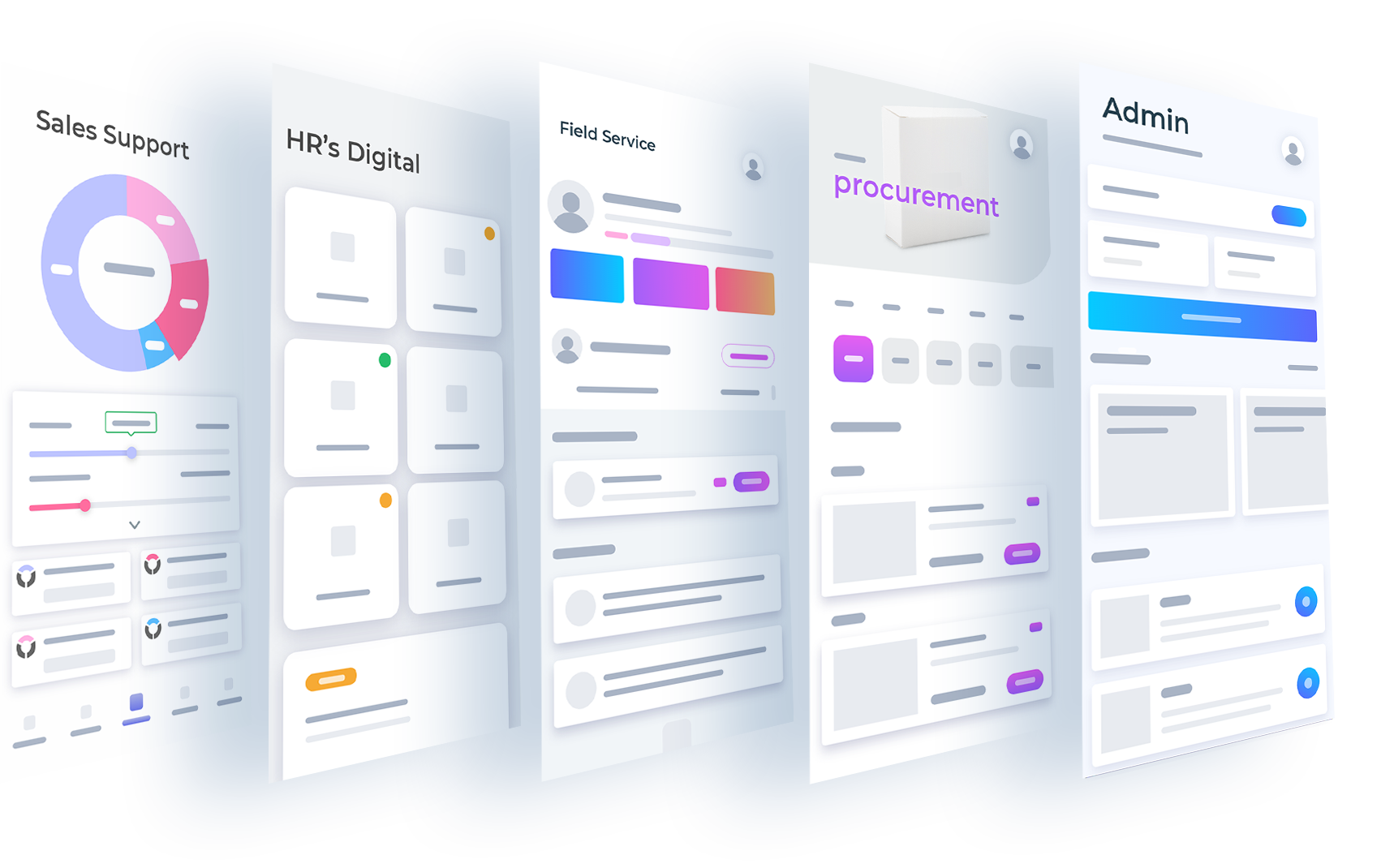
Ready to discuss your low-code use cases?
Start for free with DronaHQ and build custom business apps
Book an expert call →Benefits of low-code platform for enterprise businesses
We have discussed low-code platform use cases above now let’s see some of the advantages of using low-code:
Support and Scalability: Low-code platforms provide easy integration of information programs with other programs in the organizational software ecosystem. Low-code platforms can provide both run-time and dev-time scalability. The ability of low-code platforms to meet organizational development needs is dev-time scalability. The ability of the applications built on low-code platforms to provide fast-user experiences is run-time scalability
There are several features associated with dev-time scalabilities, such as,
- Easy onboarding of new developers to the platform
- Allows role-based access
Certain features associated with run-time scalability are:
- Faster deployment with automated tasks
- Enables rapid development with containerization
- Faster software development and deployment: Low-code technology reduces the manual coding effort to ground level. It also has a user-friendly user interface, one-click deployment and collaboration environment support. Delivery of new applications is accelerating, playing a critical role in the rapidly accelerating digital transformation.
- Better agility across the software development lifecycle: In comparing low-code with traditional programming, low-code solutions allow developers to easily accept changes to a project and transform the apps or processes even after deployment which helps businesses to quickly adapt to the shifts in customer expectations and revert to the market changes.
- Reduced risks associated with shadow IT: Companies will eradicate the requirement to delegate some projects to IT service providers by providing developers with competent tools to build applications faster. Low-code development platforms thus help overcome shadow IT development. For businesses, this means better IT management, the possibility of end-to-end operational transparency, reduced data security risks and many other improvements in operational efficiency and software maintenance.
Choose DronaHQ for all your low code use cases
As businesses increasingly embrace the power of low-code technology, DronaHQ shines with its intuitive features. Here are some compelling reasons why DronaHQ stands out:
- User-Friendly Interface: Navigate effortlessly through our comprehensive UI builder, designed to simplify the application development process. With drag-and-drop capabilities, crafting powerful business applications becomes a seamless experience.
- Extensive Component Library: Choose from a vast array of over 100 pre-built UI components, providing unparalleled flexibility. Tailor your applications to your specific needs with ease.
- Cross-Platform Integration: Effortlessly integrate your applications across web, iOS, and Android platforms. DronaHQ’s ready API and database connectors ensure a smooth and efficient cross-platform user experience.
- Security and Administration: Prioritize security with our robust features and efficient administration tools. Your applications are safeguarded, allowing you to focus on innovation with peace of mind.
- Multi-Pricing Options: Select the pricing plan that suits you best, with options tailored to developers and their specific requirements. Find a plan that aligns with your goals and budget.
- Versatility: Build a variety of applications, from analytics dashboards to consumer portals and e-commerce solutions. DronaHQ provides the flexibility and capabilities needed for diverse enterprise needs.
- Free Mobile Application Development: Explore the world of mobile application development with our free plan. Experience the freedom to build and innovate without cost barriers.
- Self-Hosting Options: Enjoy the advantages of self-hosting, giving you control over your applications and data.
DronaHQ is where innovation converges with simplicity, providing you with a powerful platform to turn your vision into reality effortlessly. Embrace the future of low-code technology with DronaHQ.


